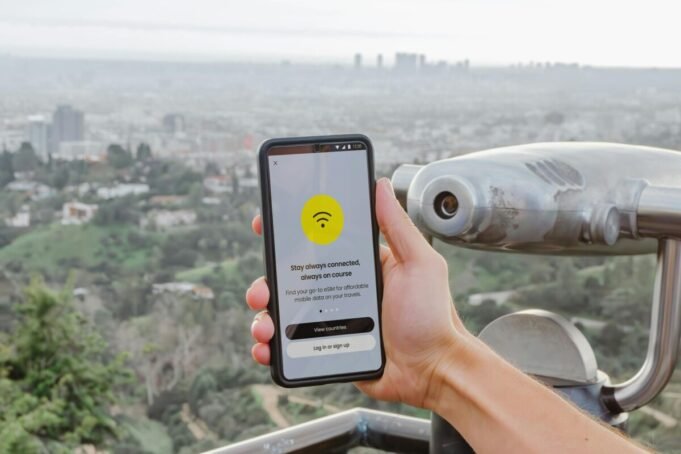Picture this: You've just returned from an incredible overseas adventure, still basking in the afterglow of unforgettable memories. But then, reality hits. Your phone bill arrives, and it's a nightmare of astronomical roaming charges. Sound familiar? For many travelers, roaming is often the default, but it's rarely the cheapest option. Fear not, intrepid explorers! There are a variety of budget-friendly alternatives for staying connected during your journeys. In this article, we'll explore how to enjoy cheap internet abroad without sacrificing your travel budget.
Why Roaming Should Be Your Last Resort
Brief Explanation of Roaming
Roaming occurs when your phone connects to a foreign network while abroad, allowing you to make calls, send texts, and use data. However, this convenience comes at a steep price. Roaming fees can quickly add up, leaving you with a bill that rivals the cost of your entire trip.
Real-World Examples
Take the story of John, who returned from a two-week European getaway to find a $1,200 phone bill waiting for him. Or Sarah, who paid $15 per MB of data while roaming in Japan. These cautionary tales are all too common, but they don't have to be your reality.
Alternatives Overview
Thankfully, there are several savvy ways to stay connected while abroad without breaking the bank. From local SIM cards to eSIMs and portable Wi-Fi hotspots, we'll explore the best options for travel internet that won't leave you with post-vacation sticker shock.
Local SIM Cards: Your Travel BFF
Benefits
One of the most cost-effective ways to enjoy cheap internet abroad is by purchasing a local SIM card at your destination. These prepaid cards offer affordable data packages and local rates on calls and texts, making them a budget-friendly choice for travelers.
How to Get One
Local SIM cards are widely available at airports, convenience stores, and even online for advance purchase. Simply swap out your regular SIM card for the local one, and you're ready to go.
Tips for Choosing
When selecting a local SIM card, consider your data needs, trip length, and the coverage area. Some cards may offer better rates for shorter stays, while others provide more comprehensive coverage for longer adventures.
eSIMs: The Digital Nomad's Secret Weapon
What is an eSIM?
An eSIM, or embedded SIM, is a virtual SIM card built directly into your phone. This innovative technology allows you to activate a local data plan without the need for a physical SIM card.
Advantages
eSIMs offer unparalleled convenience and flexibility for travelers. With a few taps on your phone, you can easily activate a local data plan and switch between providers as needed.
Best Providers
Several companies, such as Airalo, Holafly, and Nomad, offer eSIM plans specifically designed for travelers. These providers offer competitive rates and coverage in hundreds of countries, making them a top choice for digital nomads and frequent flyers.
Portable Wi-Fi Hotspots: Share the Connection
Ideal for Groups
If you're traveling with family or friends, a portable Wi-Fi hotspot can be a cost-effective way to keep everyone connected. These compact devices allow multiple users to connect to a single hotspot, saving you the hassle and expense of individual data plans.
Pros & Cons
Portable hotspots offer the convenience of a shared connection, but they may come with daily data limits. It's essential to choose a plan that aligns with your group's needs to avoid overage fees.
Rental Options
Many airports and hotels offer portable Wi-Fi hotspot rentals, making it easy to stay connected from the moment you arrive. Some companies, like Tep Wireless and Vision Global Wi-Fi, even offer international shipping, so you can have your hotspot waiting for you at your destination.
Free Wi-Fi: Use with Caution
Where to Find It
In the quest for cheap internet abroad, free Wi-Fi can be a tempting option. Many cafes, hotels, and public spaces offer complimentary Wi-Fi, making it easy to stay connected on the go.
Security Risks
However, public Wi-Fi networks come with inherent security risks. Hackers can easily intercept data transmitted over these unsecured networks, putting your personal information at risk. To protect yourself, always use a VPN (virtual private network) when connecting to public Wi-Fi.
When Free is Worth It
Despite the risks, free Wi-Fi can be a useful option for light browsing or quick email checks. Just be sure to avoid sensitive tasks like online banking or entering credit card information while connected to public networks.
Recap of Options
In the battle against roaming fees, travelers have a powerful arsenal of cheap internet abroad options. From local SIM cards and eSIMs to portable hotspots and cautious use of free Wi-Fi, there are plenty of ways to stay connected without sacrificing your travel budget.
Choose Your Adventure
The best travel internet solution for you will depend on your unique needs and preferences. Consider factors like your destination, trip length, data requirements, and travel style when selecting your ideal option.
Now that you're armed with the knowledge to slash your internet costs abroad, it's time to start planning your next adventure! Share your own experiences and tips for staying connected on a budget in the comments below. Happy travels!
| Option | Pros | Cons |
|---|---|---|
| Local SIM Cards | Affordable data, local rates | Requires unlocked phone, may need activation |
| eSIMs | Convenient, flexible, no physical card needed | Not available on all devices |
| Portable Wi-Fi Hotspots | Ideal for groups, connect multiple devices | Daily data limits, rental fees |
| Free Wi-Fi | Widely available, no cost | Security risks, unreliable connection |






























